
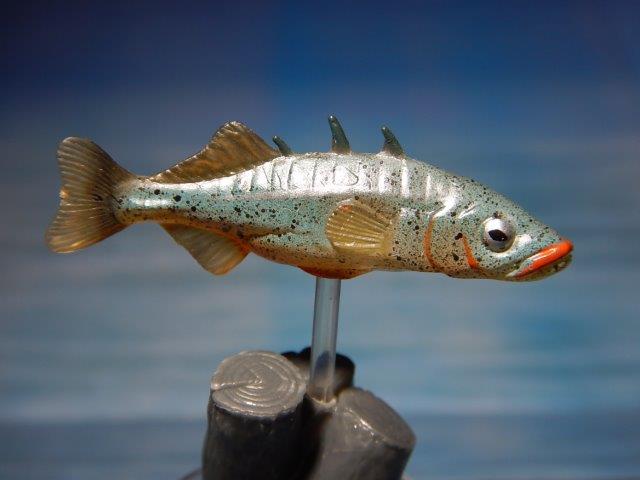
This figure is the Three-spined Stickleback (or Tiddler, or Tiddlebat, in Great Britain, because that’s kind of hilarious), Gasterosteus aculeatus, number 12 from the first series. This is the only representative of the stickleback order in the set; phylogenetically, they are grouped with more familiar spiny fish like scorpionfish, sea-robins and wolffish (at one time they were grouped with seahorses, pipefish and kin in Sygnathiformes, but that is no longer considered correct). They are named for the large, prominent dorsal spines in front of the more normal dorsal fin (3-spines is the norm, but 2 or 4 also occur); there are other species with different numbers as well. Three-spined sticklebacks are found throughout much of the northern hemisphere (although not quite circumpolar); this subspecies G. a. aculeatus (right off the Yujin paper) is the one most commonly found in Asia (including, of course, Japan) all the way over to the UK, as well as parts of North America. There are other recognized North American subspecies as well in fairly limited ranges. Given their broad niche, habitat, and geographic ranges it is not uncommon to see references to other subspecies.

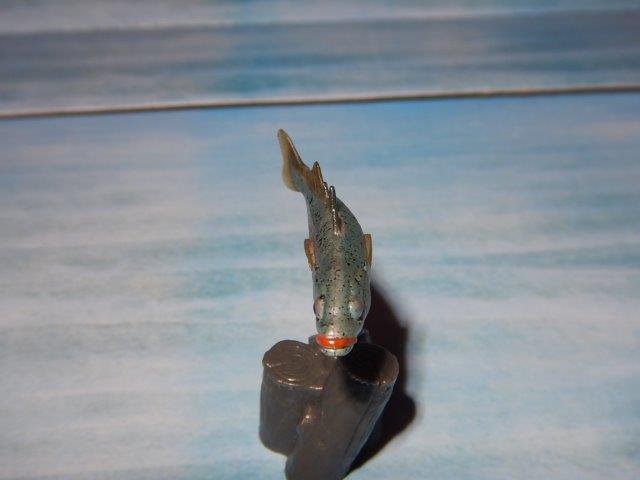
The adults are freshwater or brackish, but some populations are anadromous (young are born at sea) while others are strictly freshwater; there are occasional incidents of marine adults as well. No matter teh environment, they prefer slow moving water with vegetation. Stickleback are notable for their reproductive behaviour—males build nests to attract mates, and then care for the brood on his own (or broods, if he can entice more than one female). Given the side geographic range, it’s no surprise that there is a wide range of morphological, reproductive and environmental variation. The Yujin model (and other sources) states that the normal size is around 10cm (5 cm is more common).
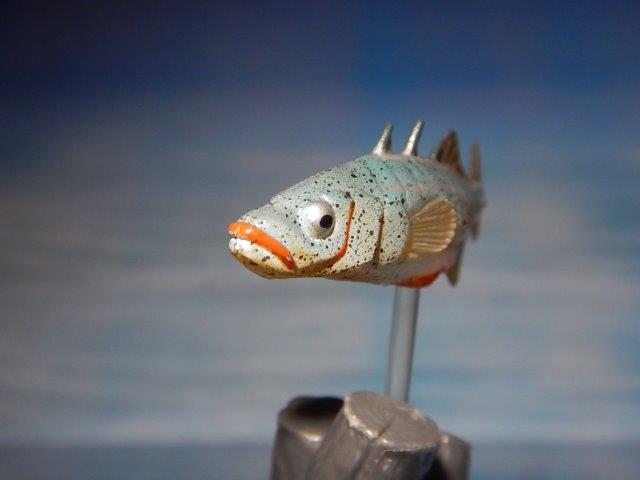
Depending on particular habitat or life stage, three-spined stickleback may be bottom feeders on invertebrates, or pelagic planktonic feeders. The morphology of these fish varies depending on where in the water column they live–in deeper lakes, adults are more likely to be pelagic feeders with large eyes, upturned mouths, and short, thin bodies (termed a limetic morph). In shallower bodies of water, three-spined stickleback have a ‘benthic’ morphology, having long and heavy bodies, small eyes, and horizontal or terminal mouths. The two forms are often sympatric and do not normally interbreed (unless the environment has been disturbed). Three-spined stickleback morphology is also affected by their environment–marine or anadromous populations tend to have more of the body-armour plates that give the genus it’s name (“belly bone”) while primarily freshwater forms have reduced armour.

This model is about 4 cm long, making the figure roughly 1:3 (maybe even as much as 1:1, depending on the TL used). The figure is another brightly coloured one, but is almost subdued compared to some live ones. Unlike many of the Yujin models, this one is not distinctly male—or at least not a brooding male, as it does not have the bright red throat patch. It’s also more bluish than greenish, but given the variability in the species (or even the subspecies) this isn’t really a major issue. There is a lot of detail in the sculpting, complete with the thin creases along the body representing the lateral plating found in the species (given the depth and number, the figure represents a freshwater individual). Moreover, given the somewhat stocky body and upturned mouth, this figure represents a deeper-water benthic-morph individual.
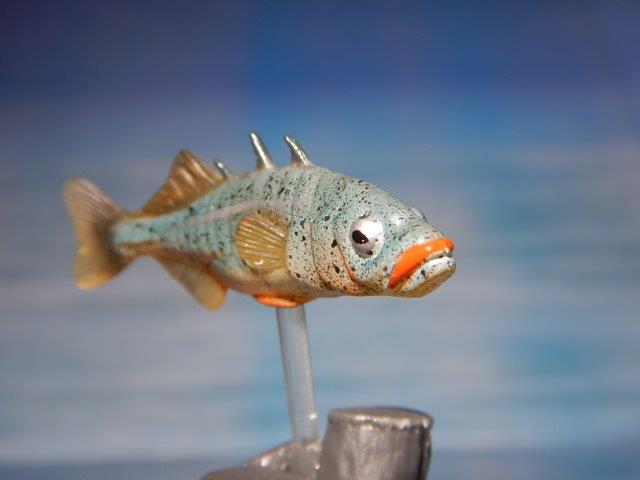
The base for this one is the grey wood stem, although a stream bottom might make more sense; the research for these figures is making me think about this sort of thing now! I am pretty sure I have seen this species made by Kaiyodo a few times, possibly in the Animaltales or Birdtales line (I think it’s in a nest), but I don’t know for sure. Given the wide range and unique appearance, one would think there would be others. But then, small non-game and non-monster fish don’t get a tonne of attention.
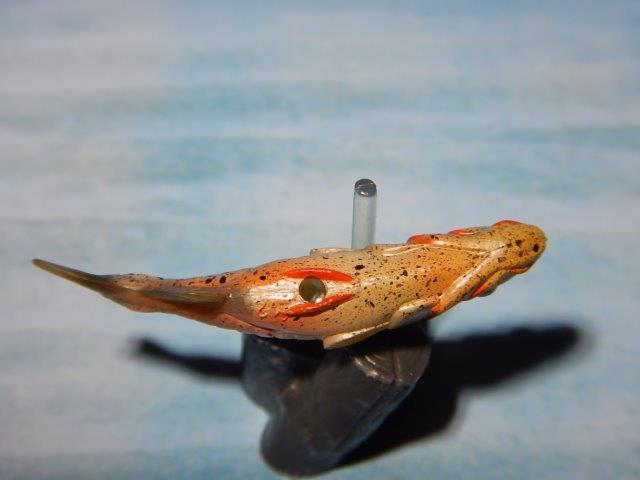
Starting on the 14th of January, 2024, I migrated my first Yujin Freshwater Fish Pictorial walkaround post from the Animal Toy Forum to this blog, with the intention of moving all species’/figures’ walkarounds here. The initial post contained a lengthy explanation of the series (both the original and updated) that I don’t think should be repeated each time! For those details, the post can be seen at the first post. Then we can just get to the fish. Most of the details and writing will come from the original post, although I may supplement/add where appropriate.
Disclaimer: links to Ebay and Amazon on the AnimalToyBlog are affiliate links, so we make a small commission if you use them. Thanks for supporting us!



